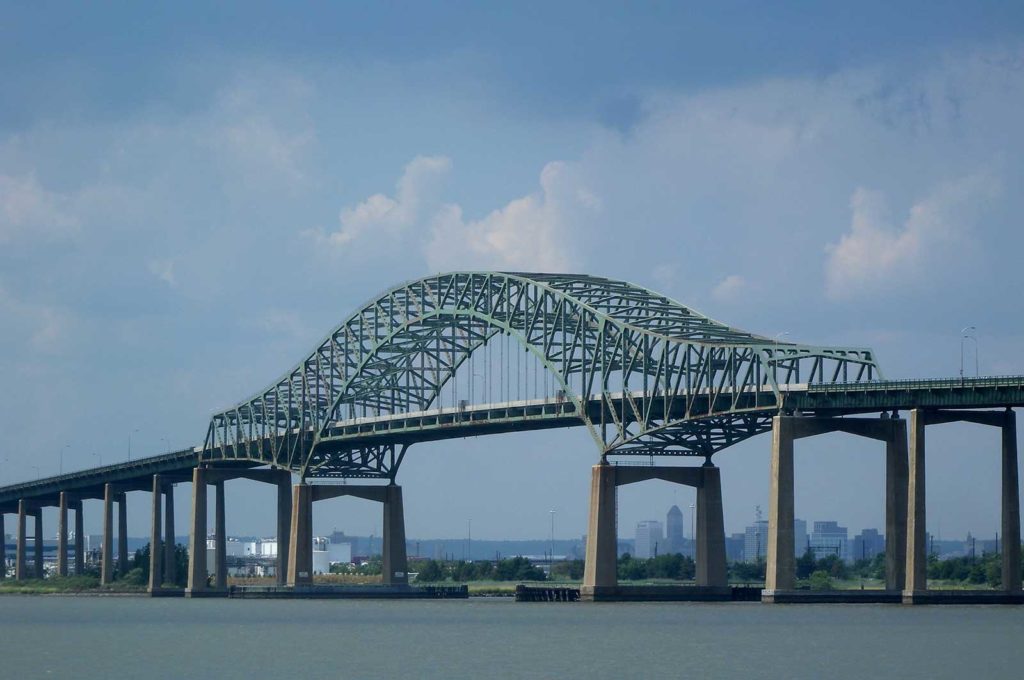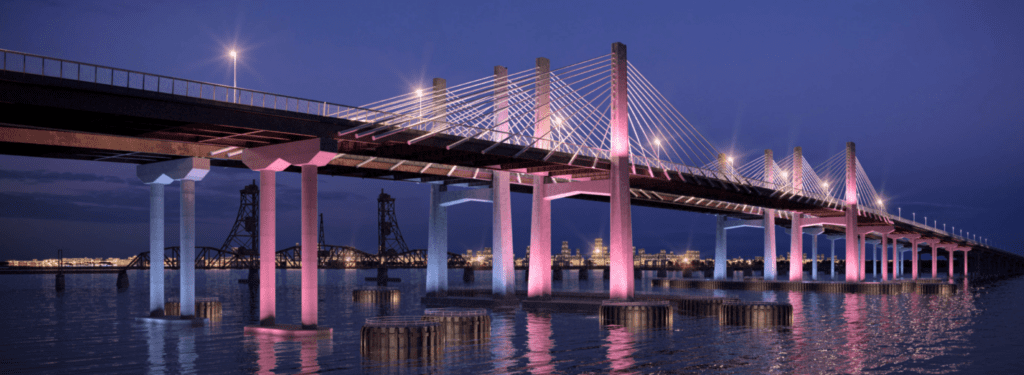
Plans to expand the I-78 Turnpike extension and completely rebuild one of Hudson County’s busiest bridges are progressing despite some objections voiced at a recent public meeting.
Last month, the U.S. Coast Guard signed off on the first piece of a plan to rebuild the Newark Bay-Hudson County Extension. The Newark Bay Bridge portion, officially known as the Vincent Robert Casciano Bridge, was first constructed in 1954 and is nearing the end of its serviceable life.
To address this reality, the New Jersey Turnpike Authority (NJTA) plans to construct a pair of cable-supported bridges to replace the existing crossing. Each of the new structures would feature four lanes in both eastbound and westbound directions.

The Coast Guard issued what’s known as a Finding of No Significant Impact notice in regard to the entirety of the Turnpike extension project, which validates NJTA’s conclusion that the project will improve environmental and community quality while relieving chronic traffic congestion between interchanges 14 and 14A.
The Coast Guard’s notice came with a bridge permit that allows the NJTA to seek additional approvals it needs to begin the 10-year project by early 2026. The Newark Bay Bridge project would kick off the larger plan for the 8.1-mile stretch of infrastructure, which would widen the entire I-78 Turnpike extension of the roadway.
During NJTA’s final public hearing on the project held on June 18 in Bayonne, representatives from the Regional Plan Association (RPA) provided testimony regarding their objections to the plan. The group identified several concerns, including the lack of examination of alternative demand management approaches, the limited scope of the environmental assessment, inconsistencies with state and local transportation initiatives, and the project’s insufficient consideration of induced demand.
The RPA’s full statement, which can be found here, requests that a comprehensive Environmental Impact Statement be prepared for the entire project and urges the NJTA to consider alternatives, including expanded transit service, peak-hour demand management, and flexible capacity options.
While there are still a few hurdles remaining for the $6.2 billion project, the final hearing and the Coast Guard’s notice moved the initiative closer to reality. If fully approved, the existing Newark Bay Bridge will remain in service until 2031, when the first of the new structures is complete.
When the second cable-stayed bridge is anticipated to be finished in 2036, traffic will shift into its permanent configuration with four eastbound lanes on one structure and four westbound lanes on the other. The existing bridge would then be demolished.
The NJTA hopes to commence on the bridge in early 2026, with the work expected to span eight to ten years.